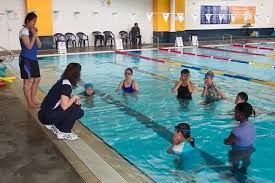From backyard pools to open rivers, water can bring both joy and risk. In Australia, where beaches, creeks, and aquatic centres are part of everyday life, understanding what makes water safe is more than a precaution—it’s a necessity. The right knowledge can be the difference between a refreshing swim and a preventable tragedy.
In this guide, we unpack the core criteria of safe water environments and why a water safety course can equip people with life-saving skills and awareness.
Why Water Safety Matters More Than Ever
Australia has one of the highest rates of recreational water use in the world. Yet every year, incidents of drowning and near-misses make headlines. Often, these aren’t due to reckless behaviour but a lack of understanding around what “safe water” really means.
A water safety course isn’t just for kids or lifeguards—it’s vital for parents, swimmers, teachers, and anyone spending time near water. These programs teach how to identify hazards early, act fast in emergencies, and understand how different water settings—pools, lakes, oceans—require different awareness levels.
Key Indicators of Safe Water Environments
1. Water Clarity and Visibility
If you can’t see the bottom, you can’t see hazards. Murky or debris-filled water hides sharp objects, sudden drops, or entangled plant matter. Clarity also plays a crucial role in visibility for rescue scenarios—both for lifeguards and nearby swimmers.
- Clear water promotes safe swimming.
- Cloudy or discoloured water suggests possible contamination or danger.
2. Supervision and Signage
Environments with appropriate signage—such as depth markers, current warnings, and “no diving” notices—provide critical context for swimmers. But signs alone aren’t enough. A safe aquatic area also has responsible adult supervision or lifeguards on duty.
- A water safety course often includes training in active supervision and hazard recognition.
3. Water Quality and Testing
Water contaminated with bacteria or chemicals can lead to serious illness. Councils and pool operators conduct regular water testing, but swimmers should also learn what to look out for:
- Strong chlorine smells can indicate imbalance.
- Algae growth, oily films, or litter are signs the water may be unsafe.
The NSW Health Swimming Pool Guidelines offer a comprehensive breakdown of best practices for public pools and private water spaces.
4. Entry and Exit Points
A safe water environment includes clearly visible, accessible entry and exit points—stairs, ladders, shallow slopes. Slippery, sharp-edged, or difficult-to-reach zones increase the risk of slips, trips, and fatigue-related drowning.
Courses that focus on water safety often provide instruction on how to assess an environment before entering, including spotting safe exit paths in case of fatigue or sudden weather changes.
Common Risks Even Experienced Swimmers Overlook
Rip Currents and Unseen Tides
Even the strongest swimmers can be overpowered by natural forces. Currents aren’t always visible, especially in estuaries or surf zones. Many drowning events involve overconfidence in these environments.
A water safety course covers how to read ocean conditions, identify rips, and use calm responses to manage panic.
Alcohol and Water Don’t Mix
Impaired judgement and slowed reflexes make alcohol a key contributor to adult drownings. Safe water isn’t just about the water itself—it’s about the people in and around it.
False Sense of Security in Pools
Familiarity breeds complacency. Pools may seem controlled, but lack of supervision, faulty pool gates, or unsafe drain covers can quickly turn a safe setting into a tragic one.
How Training Translates into Safer Outcomes
People who complete a water safety course tend to:
- React faster in emergencies
- Recognise hazards before they escalate
- Feel confident teaching children and peers safer habits
Training boosts preparedness and cuts through the false confidence that leads to poor choices in aquatic environments. It’s not just about swimming—it’s about critical thinking, responsibility, and knowing what not to do.
Learning Doesn’t Stop with Kids
While swim lessons are often a child’s first exposure to water safety, it shouldn’t end there. Teenagers, parents, educators, and outdoor enthusiasts all benefit from revisiting safety principles as they grow.
Courses can be tailored to different stages of life—from parent-and-child swim safety to older adults learning how to manage mobility changes in water.
Start with a water safety course that’s accessible, practical, and based on real-world conditions.
What to Look For in a Quality Safety Program
Not all courses are created equal. The most impactful ones will include:
- Hands-on rescue simulations
- CPR basics and emergency drills
- Coastal and inland water risk education
- Age-appropriate modules for children, teens, and adults
The best programs go beyond swimming technique. They develop observation skills, build water confidence, and reinforce the seriousness of supervision.
For anyone spending time near rivers, beaches, or pools, a water safety course should be part of your personal skill set.
The Bottom Line
Water safety isn’t just about avoiding danger—it’s about building confidence, responsibility, and the ability to act when it counts.
Whether you swim for fitness, fun, or work in environments where water is part of the setting, a water safety course is one of the smartest investments you can make.

